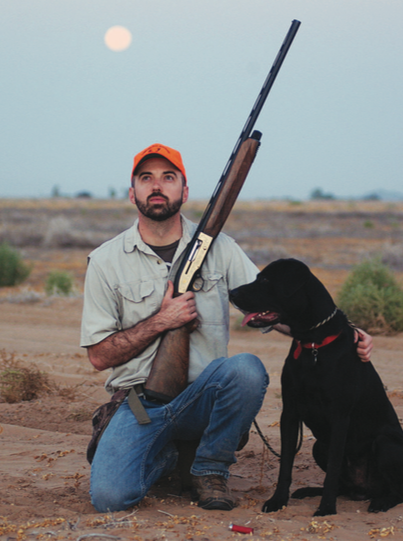
BY JIM MATTHEWS
Since 1999, there has been a nationwide effort by the U.S. Fish and Wildlife Service to get a more accurate handle on mourning doves numbers and the impact hunter harvest has on doves. That year was the first year the HIP (Harvest Information Program) was implemented in all states with hunting seasons on doves. Just four years later, the nationwide dove banding program was kicked off.
Prior to the implementation of those two data-gathering programs, the feds used information collected from spring call count surveys (now discontinued) and annual breeding bird survey to track trends in dove numbers. Population estimates made from this data were guesses at best.
In the 1980s and 1990s, those two surveys showed a long-term and fairly dramatic decline in dove numbers from when they were began in the 1960s. As a result, both state and federal scientists wanted more information that would allow them to make estimates on actual numbers of doves and hunter impact on those numbers, according to Mark Seamons, the national dove information coordinator.
That led to the implementation of the HIP program in 1999 and the national banding program in 2003. The information gathered from these two programs has allowed the USFWS to not only make fairly accurate population estimates on dove numbers, but also what percentage of that population is harvested by hunters each year.
It works this way: If you remember doing the HIP survey when you bought a license, it asked how many doves you bagged the previous year. Through this information, the feds can estimate the total number of birds harvested nationally and by state. Hunters have also been asked to report banded bird information (just like with waterfowl). This data gives the USFWS the number of banded birds taken versus non-banded birds harvested. The math allows both a way to estimate the total population and the percent of birds killed by hunters out of that total population.
“Harvest rates are pretty low relative to the doves’ ability to reproduce,” said Seamans. “In the West, hunters only harvest about two percent of the total number of doves. We’re definitely not harvesting too many and our monitoring shows that.”
It is this data that calmed biologists fears that hunting had been driving the long term decline in mourning doves. But it didn’t tell them why dove numbers have been declining — and continue to decline.
“In our three management regions (East, Central, West), doves have declined over the past decade, but that does seem to have flattened a bit,” said Seamons.
The other relatively new part of the data monitoring program organized and compiled by the USFWS is wing collection from hunters to age the doves. This data gives the biologists good data on the number of young-of-the year versus mature doves in the population, allowing for compiling good information on recruitment of young birds into the population each year. More young birds in the harvest means there was a good hatch that spring. Fewer young birds mean the opposite. If the scientists see consecutive years of low production, it will likely correlate with overall number declines. Seamans said that one of the factors in poor production in doves in drought, with fewer birds produced in dry years.
The question remains: Why are doves declining? Most scientists like Seamans believe it is a combination of factors. Changes in agriculture, forest management practices, and drought (or climate change) are the big three they suspect. But proving those hypothesis is difficult on a bird so widespread across so many habitat types as doves, which have a national population of around 200 million.
“There is [also] likely increasing competition for resources between mourning doves and the native but expanding white-winged dove populations, and between mourning doves and introduced Eurasian collared doves,” said Seamans.
While last year’s dove data was not available at press time, Seamans said it appears that recent declines have moderated and dove numbers will continue a healthy, robust levels. More than enough to continue to allow for liberal hunting seasons.
As long as the data shows that hunters aren’t taking a significant portion of the population of doves, enough to be a driving factor in declines, the limit will remain at 15 birds. And we can thank ourselves for providing the data that sets that limit.


